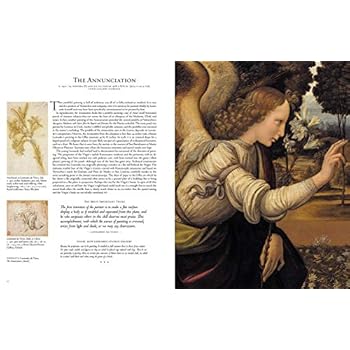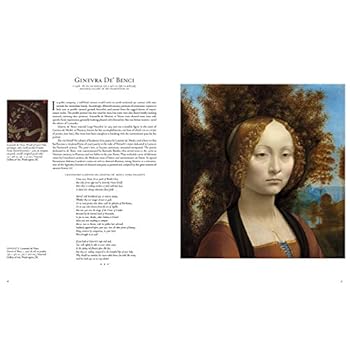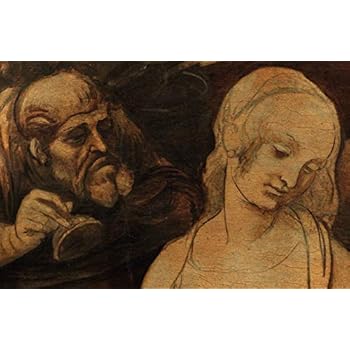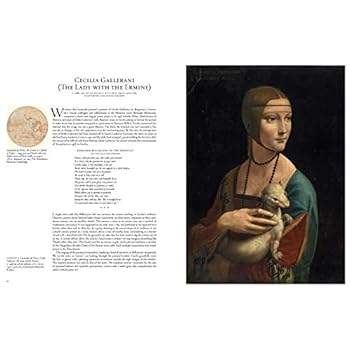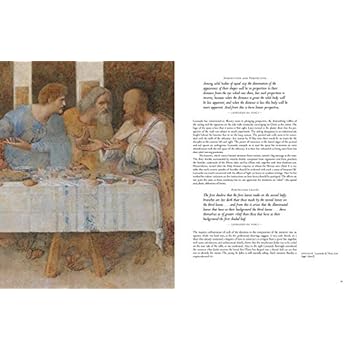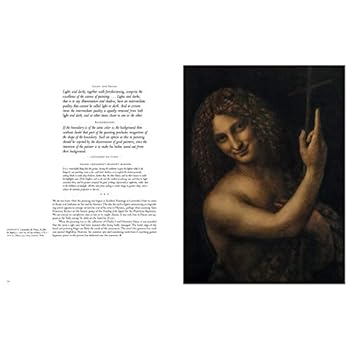Leonardo by Leonardo: Leonardo da Vinci
Category: Books,Arts & Photography,Individual Artists
Leonardo by Leonardo: Leonardo da Vinci Details
Review Leonardo da Vinci certainly epitomizes the Renaissance man, and this year marks the 500th anniversary of his death―and his genius. Martin Kemp…is one of the world’s leading experts on Leonardo. His book, Leonardo by Leonardo, is a stunning gallery of the master’s 27 existing paintings paired with Kemp’s lifetime of scholarship and insight. And it includes extensive reflections by Leonardo himself.” - Christiane Amanpour, Amanpour & Co, PBS-TV/CNN Read more About the Author Martin Kemp, one of the world's leading experts on Leonardo da Vinci, was trained in Natural Sciences and Art History at Cambridge University and the Courtauld Institute, London. His 25 books include The Science of Art: Optical Themes in Western Art from Brunelleschi to Seurat (Yale), and The Human Animal in Western Art and Science (Chicago). He has published and broadcast extensively on Leonardo da Vinci, including the prize-winning Leonardo da Vinci: The Marvellous Works of Nature and Man and Leonardo (both Oxford). His Christ to Coke: How Image Becomes Icon (Oxford) looks at 11 types of icons across a wide range of public imagery. He has written regularly for Nature, his essays for which have been published as Visualizations and developed in Seen and Unseen (both Oxford). His most recent books are Art in History (Profile Books) and Mona Lisa with Giuseppe Pallanti (Oxford). Living with Leonardo (Thames and Hudson) was published in March 2018. Kemp has been a Trustee of the National Galleries of Scotland, The Victoria and Albert Museum, and The British Museum. He has curated and co-curated a series of exhibitions on Leonardo and other themes, including "Circa 1492" at the National Gallery in Washington, "Spectacular Bodies" at the Hayward Gallery in London, "Leonardo da Vinci: Experience, Experiment, Design" at the Victoria and Albert Museum and "Seduced: Sex and Art from Antiquity to Now," at the Barbican Art Gallery in London. Read more Excerpt. © Reprinted by permission. All rights reserved. WHY A BOOK ON LEONARDO DA VINCI? Leonardo died five hundred years ago. He completed notably few paintings, pursued many ephemeral activities in Renaissance courts, and published almost nothing on the many sciences and technologies about which he wrote in semilegible mirror script. Why does he matter today and why does he warrant yet another book? The pragmatic answer is that his legacy continues to exercise a magnetic fascination on a universal basis. He painted what is considered by many to be the world’s most famous picture. But being famous for being famous is not enough. There must be something more essential to which we can point. If we want an art historical answer, we can say that he radically reformed every genre of painting that he touched―religious and secular narratives, devotional images, and portraiture. We might add that he was also a great innovator in architectural design, even if he was not the “architect” of any known building. Without him the history of art would have looked very different.All the paintings definitely by him have a strange, living presence that renders them uncanny and even uncomfortable. They are more than his reconstructions of nature using all the knowledge of causes and effects; they imply and evoke a world that lies below appearance. This is particularly the case after 1500. He achieves it through what I am calling the “optics of uncertainty”―the withdrawal of absolute certainty of seeing, in which the forms, particularly their boundaries, are elusive. Whether the subject is a beloved lady or the Savior, he invites us to infer that there is more than meets the eye. Mona Lisa and Salvator Mundi both deny ultimate access to their secrets in ways that relate intimately to poetic and theological considerations. (Martin J. Kemp) Read more
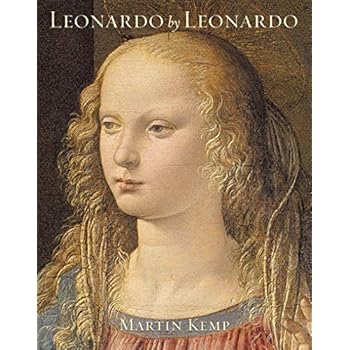
Reviews
Luscious - the quality of publishing, and every aspect of this book is luscious and luxurious.Firstly, a word about the quality of color reproductions - they are the best of any book on Leonardo published at this time, including the thicker monographs by Tashen and Prestel. Please, ignore the relative thinness and concentrate instead on the truer-to-life colors and increased resolution of the images. Prior this book I always suspected all other books were using the same scans, because all of the other books had contrast dialed way up, to the detriment of showing any nuanced colors, especially in the tree folliage, dress folds and hair. For example, in this book's reproduction of the Annunciation, the trees are no longer just dark siluettes over overly bleached sky... it is notoriously difficult to capture a painting in a photograph, but they certainly did better job here than with the older scans elsewhere.Then, there is the text by Martin Kemp, - and need I say anything more? Yes, he is an institution in itself, and what you get is what you expect- his commentary is intelligent, eloquent, and to the point, without being verbose with unneeded "filler" words. The fact that the book thickness is rather managable is a huge plus as it actually may get read unlike the other 800- page opuses and encyclopedias...I heartily recommend this book to any art lover.In my mind, it is certainly superior over Tashen and Prestel tomes.Hope this helps!Cheers!

